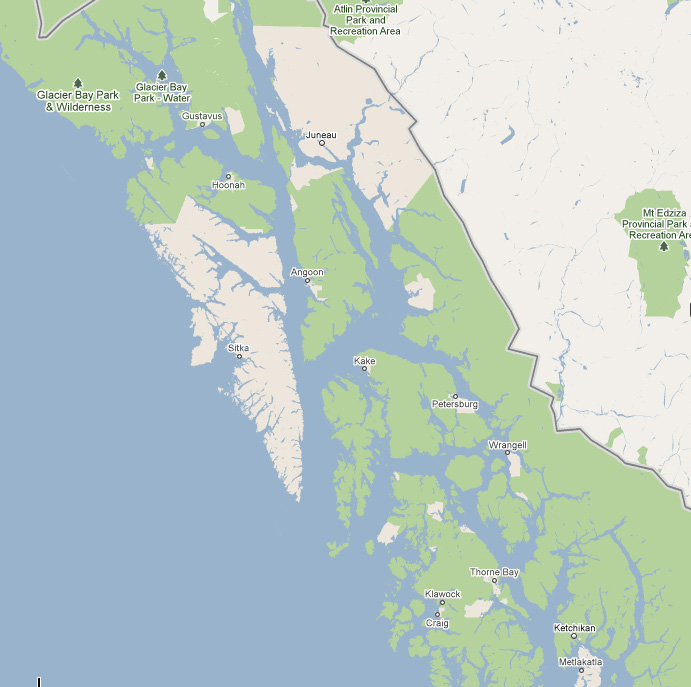

| This travelogue is one family's experience in the inland passage in Alaska. To see a photo in a larger size, just click on it. | |
| The next stop on our cruise was Sitka, which was the capitol city when Russia owned Alaska from the early 1800s until 1906 when Alaska's capitol was moved to Juneau. The Russians named it New Archangel from its Tlingit Indian name of Sheet'ka, which became Sitka when America purchased Alsaka from the Russians in 1867. This is a picture of St. Michael's Cathedral, which was built by the Russians in 1848. It was taken by Gary Cordette, who was traveling with us with his wife Aileen. |

|
| Like all of the cities in Alaska's Inland Passage, Sitka is a city by the sea. It's located on Baranoff Island and the city also incorporates part of the nearby Japonski Island. While Sitka is 4,811 square miles in size, it only has about 9,000 residents, making it Alaska's 4th largest city behind Anchorage, Fairbanks, and Juneau. This is a shot of a nearby mountain as the Oosterdam approached Sitka's harbor around 7 am. |
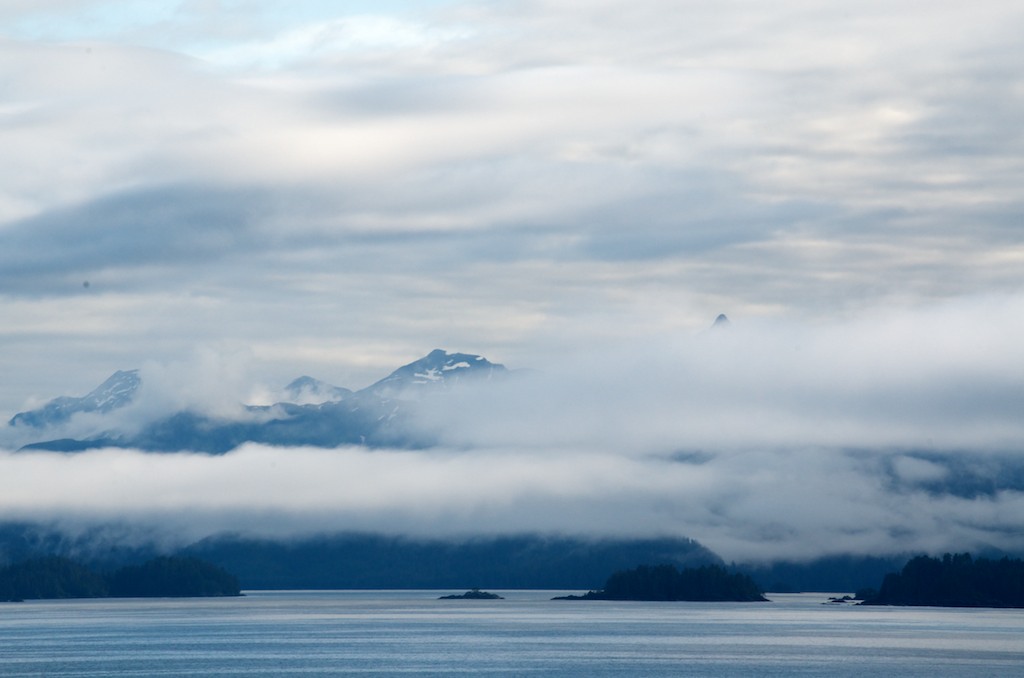
|
| As we continued our approach, the clouds started to lift and we had this beautiful view of the harbor and mountains surrounding Sitka. |
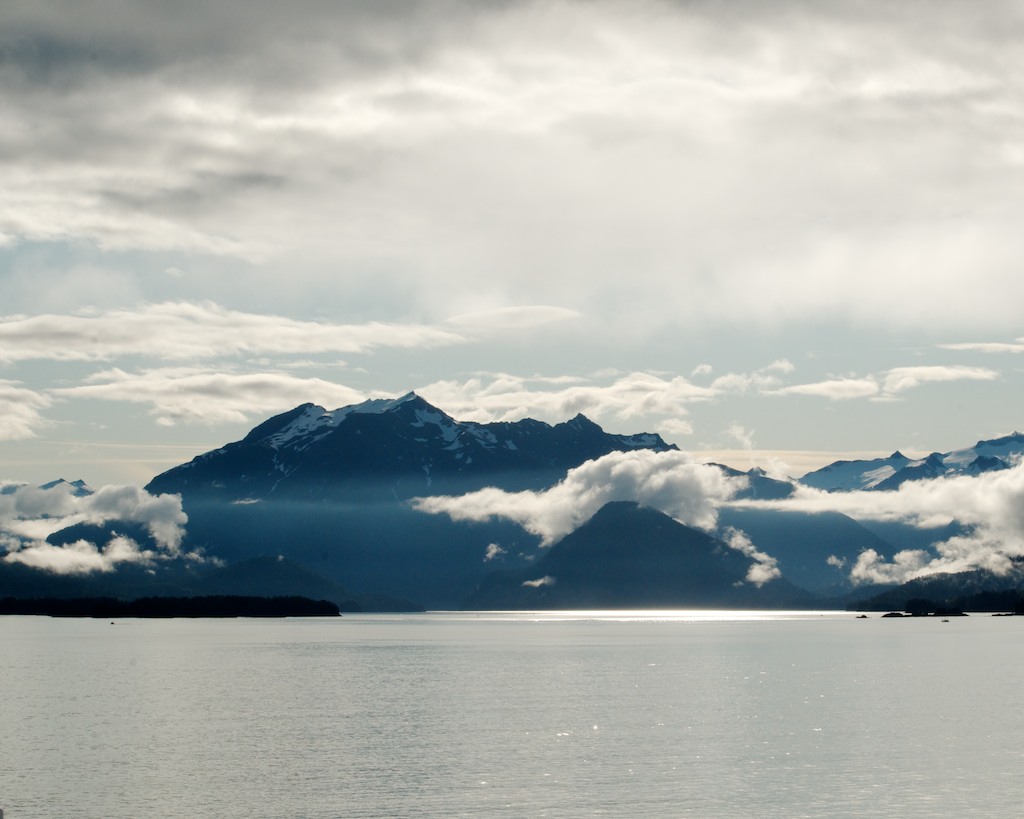
|
| The clouds lifted further as we entered the harbor and gave us this beautiful view of this nearby mountain to the left of Sitka's downtown area. |

|
| Teresa and I went on the Sea Otter Quest and Alaska Raptor Center excursion offered by Allen Marine through Holland America. The Quest was a three hour tour of the ocean areas around Sitka basically to see sea mammals like whales, sea lions, and otters, as well as eagles and, if we were lucky, some bears by the ocean's edge. Here is a shot of two eagles perched on some rocks. As an aside, eagles are very hard to photograph close up in the wild unless you have a larger and fast telephoto lens than the one I was carrying. |
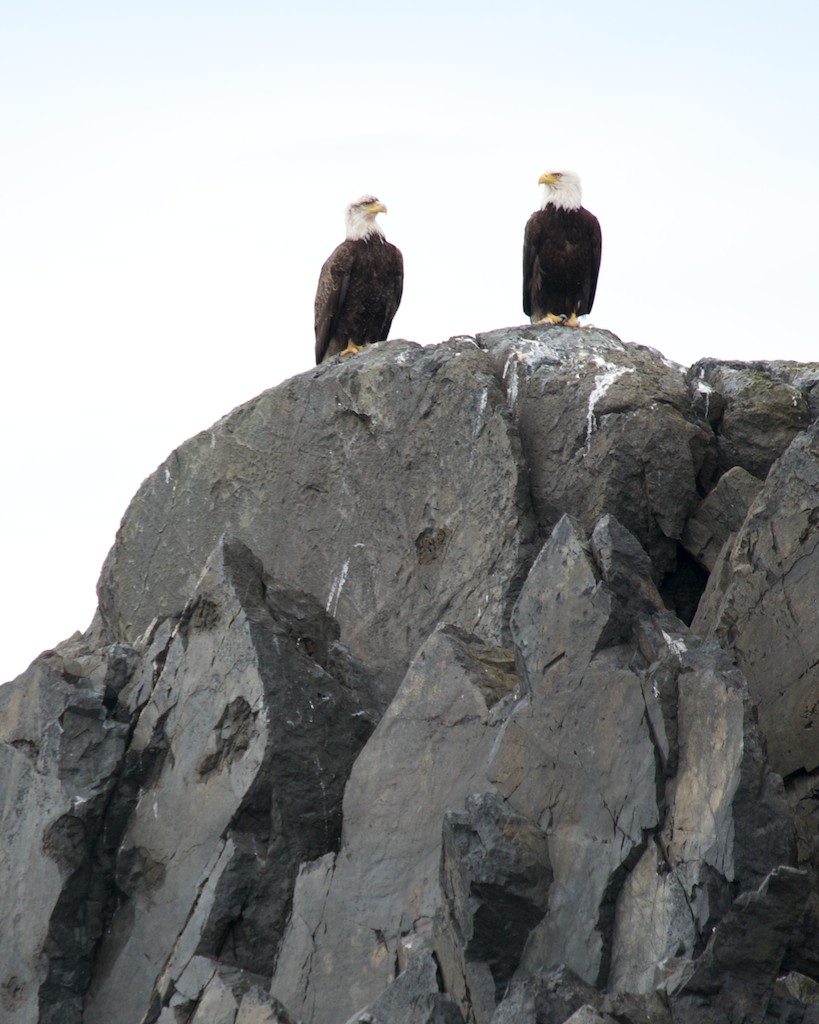
|
| This shot is very typical of the landscape surrounding Sitka, which is dotted by small islets in the bay and tree-covered mountains on Baranoff Island. |
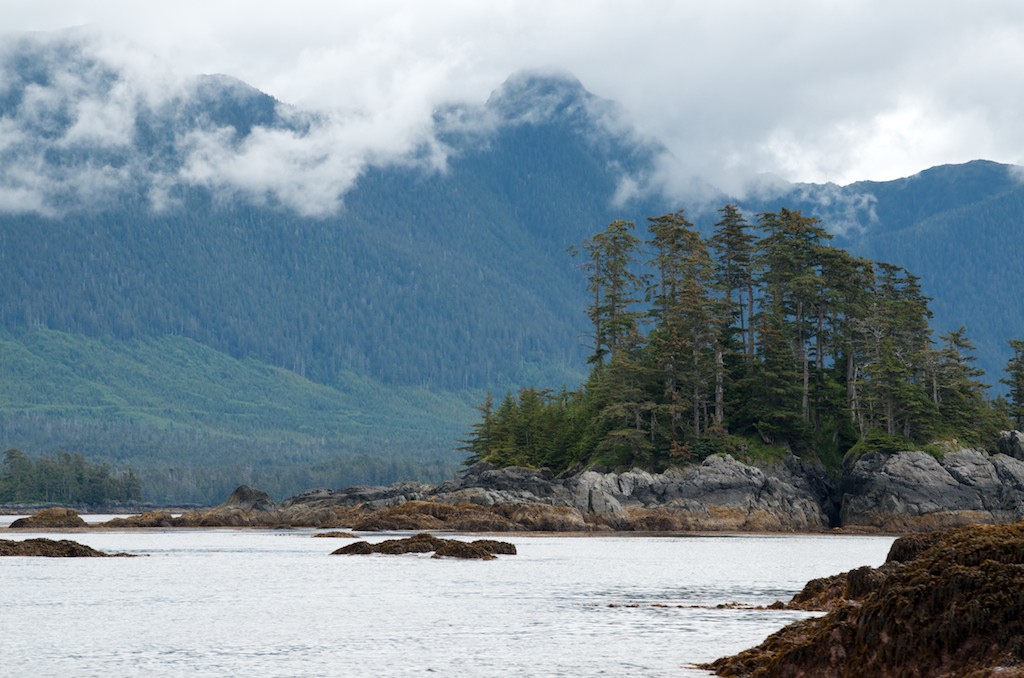
|
| When you look at the mountains on Baranoff Island, you see numerous peaks as the mountains rise and fall. In the frequent cloud cover, some of these peaks take on a black and white quality similar to what we saw throughout the Inland Passage and Glacier Bay. This was one cloud-covered peak that I focused in on. This is not a shot that I converted to black and white. It was a "color" shot taken about 10 am that morning. |

|
| The highlight on the Sea Otter Quest was sea otters. While we saw numerous groups of otters, who congregated in the kelp surrounding the nearby islets, the boat didn't get close enough for some really close-up shots, even though I had a 300mm lens. Here is the best shot that I got of otters during the trip. The word "cute" doesn't do them justice. |
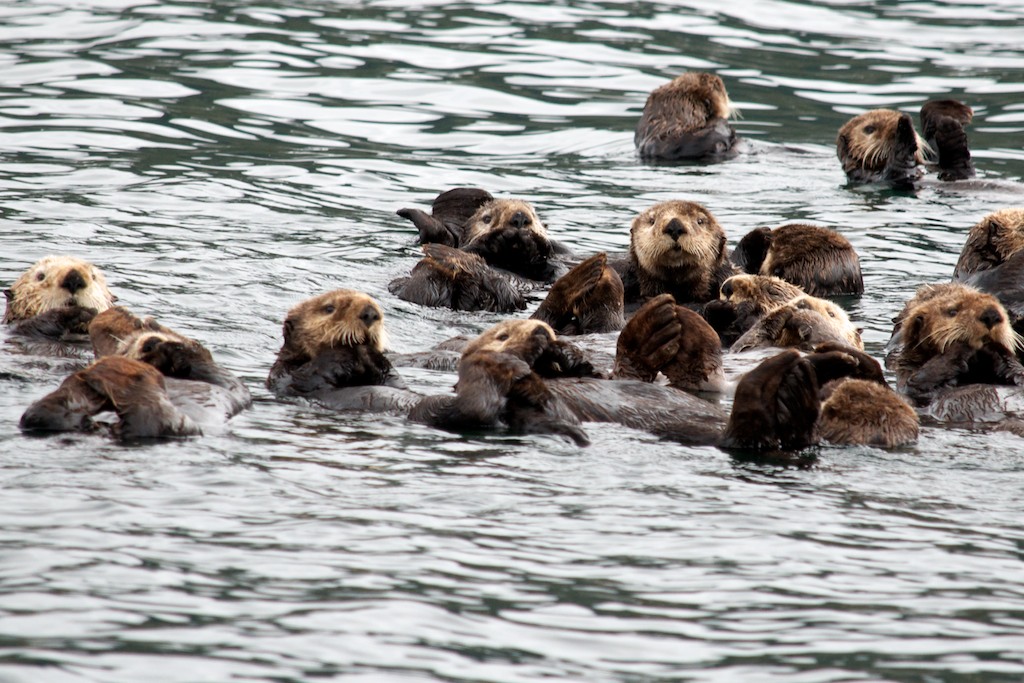
|
| This is a shot of the Oosterdam, which dropped anchor in the harbor. To get to the boat, they lowered a few of the ship's lifeboats, which are fully enclosed with motors, and tendered us from ship to shore. |

|
| The Alaska Raptor Center rehabilitates injured raptors, like eagles and owls. Here is an eagle who was injured in some way. It is inside the center's rehabilitation habitat, which has one-way glass so that we can see in, but the raptors cannot see us. |
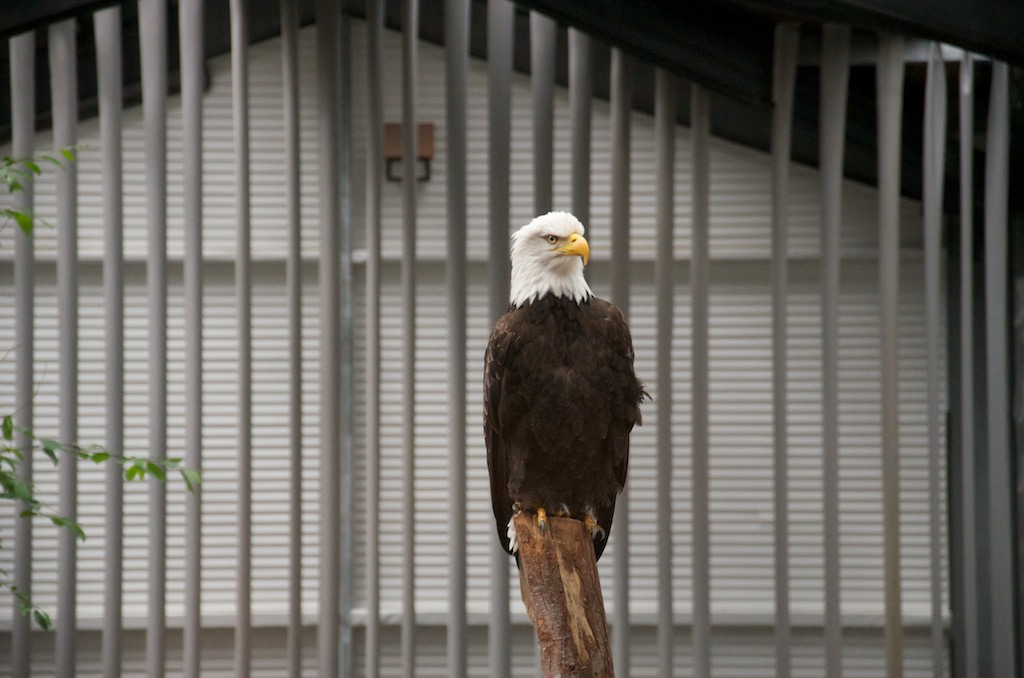
|
| Here is a wide angle shot of the rehabilitation area. The ceiling is really just wooden slats that let in the air and rain, so that the raptors are out in a safe, sheltered area that is kept at the same temperature as their natural habitat. |
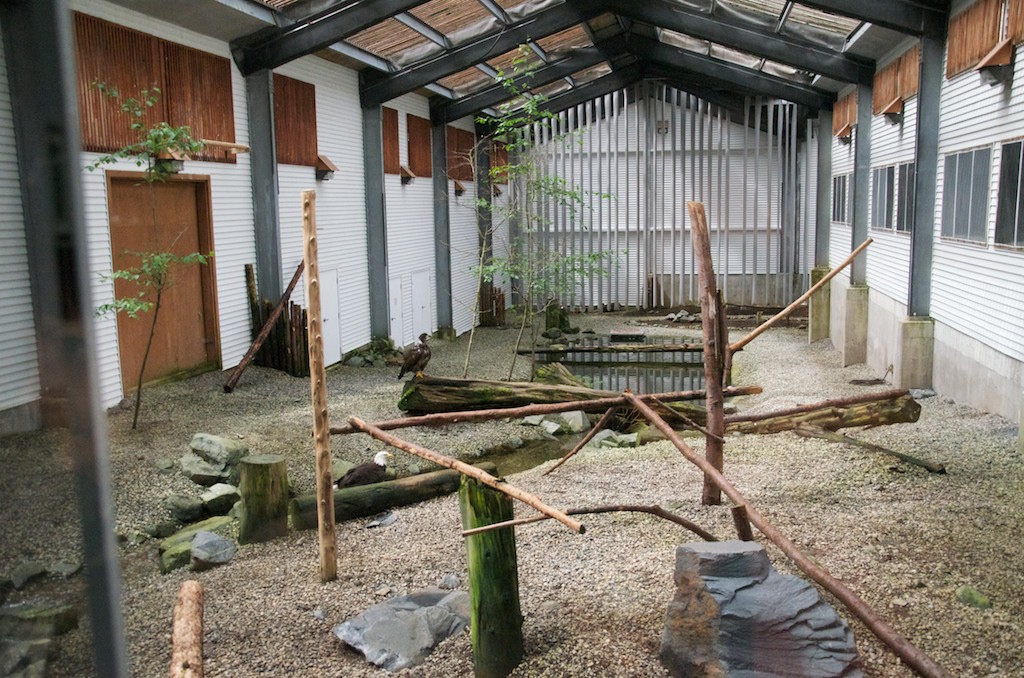
|
| Part of the tour at the Alaska Raptor Center (www.alaskaraptor.org) is to meet one of its permanent residents up close. While the center tries to rehabilitate all of the injured raptors, there are some who are too injured to be released back to the wild, so they keep them as permanent residents. This is a young bald eagle with a deformed beak that prevents her from eating properly on her own. As she ages, the feathers on her crown will turn white, giving her the bald eagle's distinctive looks. Incidentally, while she is a huge bird, she only weighs about 15 pounds because her bones are so light, which enables her to fly. |
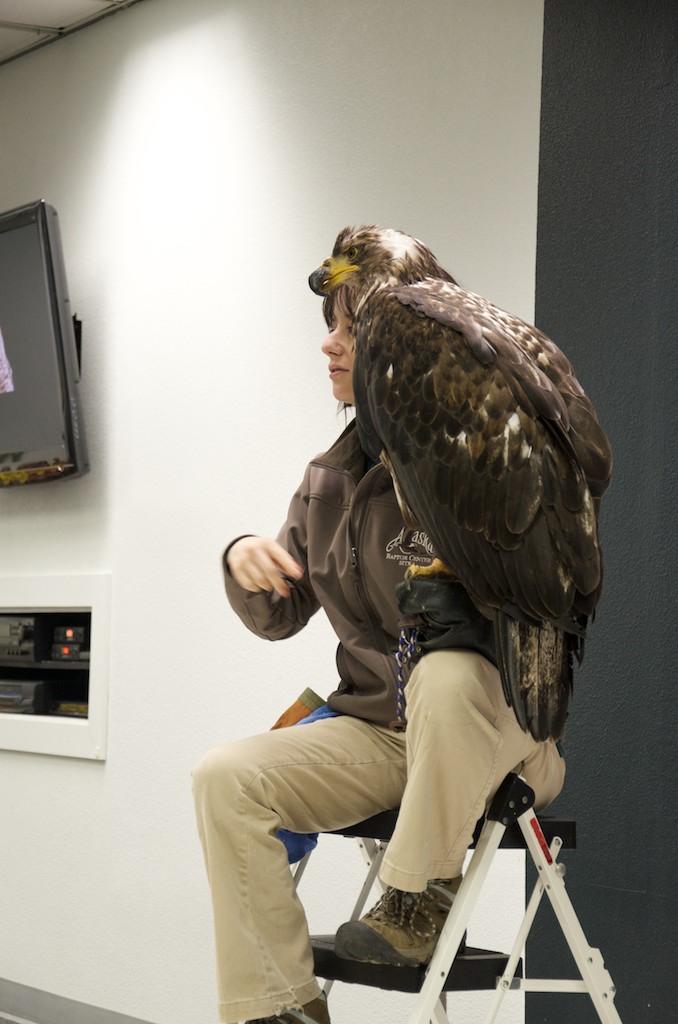
|
| While Teresa and I were on the Sea Otter Quest, our friends Gary and Aileen Cordette were touring downtown Sitka. This is a shot of a statue in town that depicts the kind of rugged settler to the area. All of the following shots in Sitka were taken by Gary. |

|
| This is a shot of the Sitka Hotel in downtown Sitka, which is very typical of the style of the buildings in town.The Sitka Hotel is the budget hotel in town with rates of about $100 per night. |
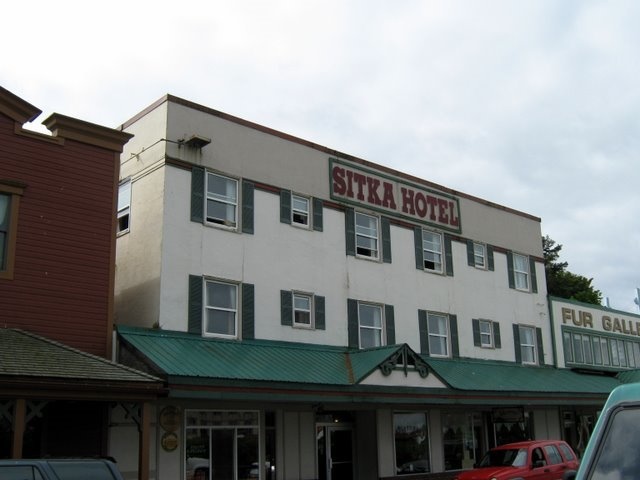
|
| This is a shot of a few of the totem poles in Sitka National Historic Park. The Tlingit indians were known for their totem poles that tell stories of the native heritage as well as of the origins of the world. By looking at the people touring the park, you can see how large the poles are. |

|
| Here's another shot of the poles in the park. Even the smaller poles are about 15 to 20 feet high. |

|
| Here's a close-up of one of the poles. |

|
| Click here to tour Ketchikan. |